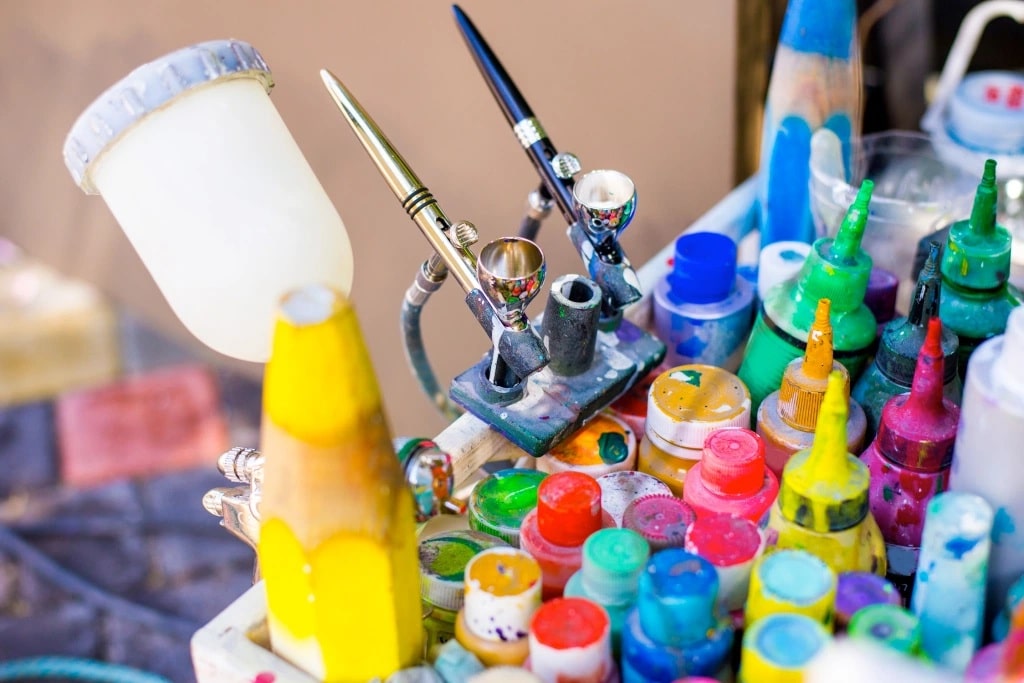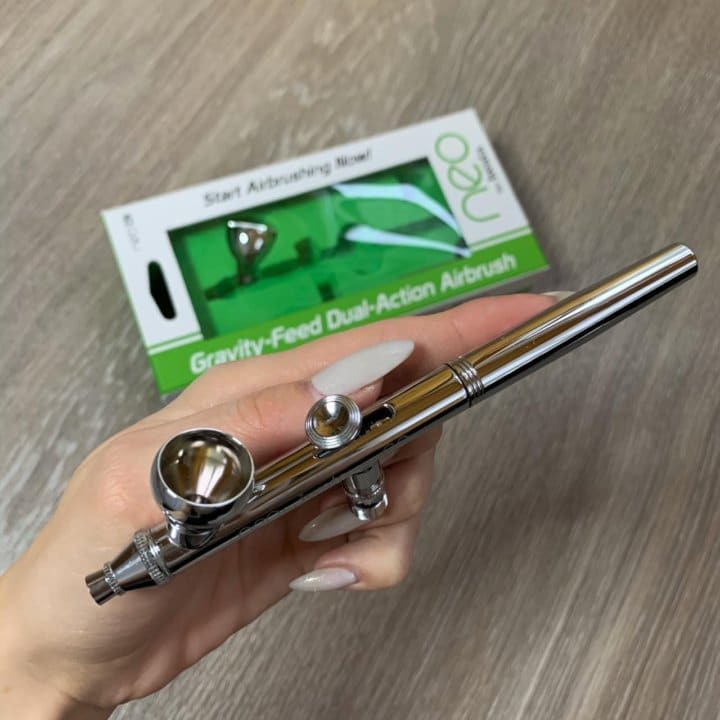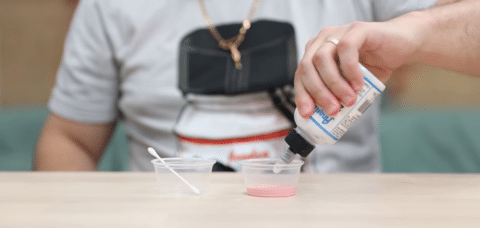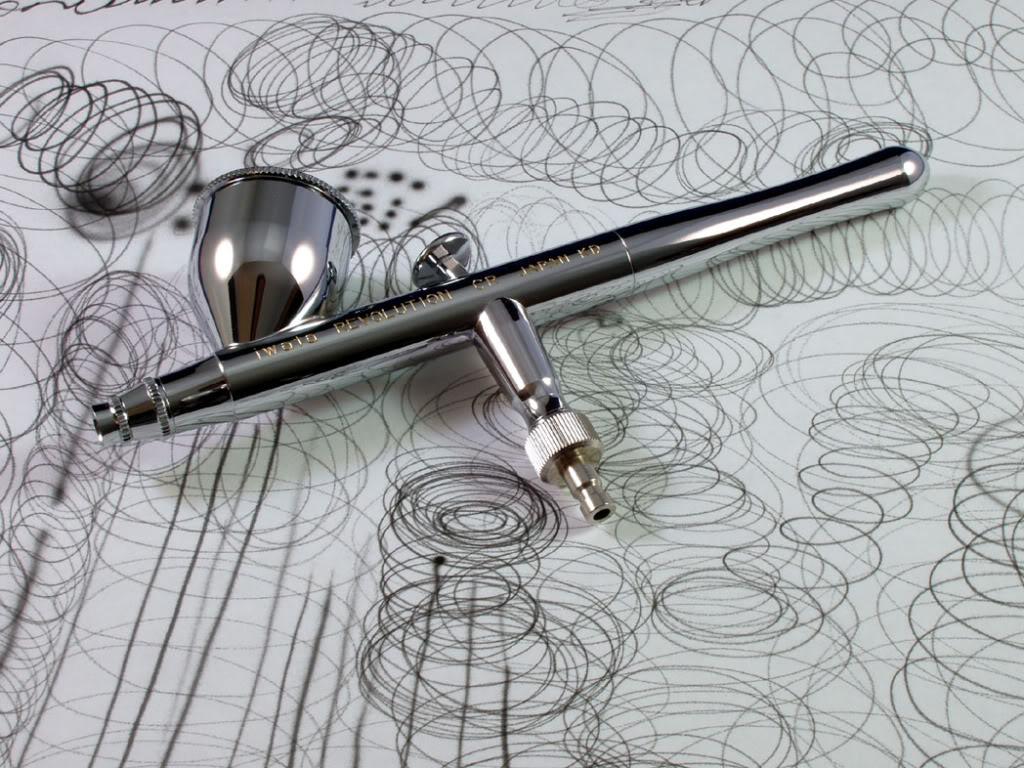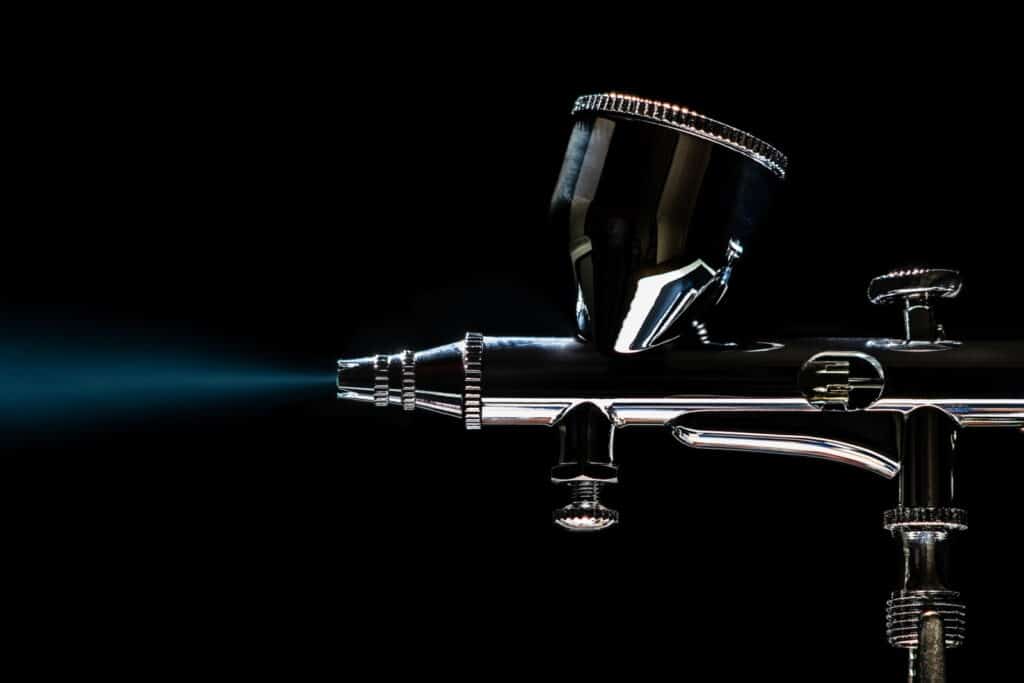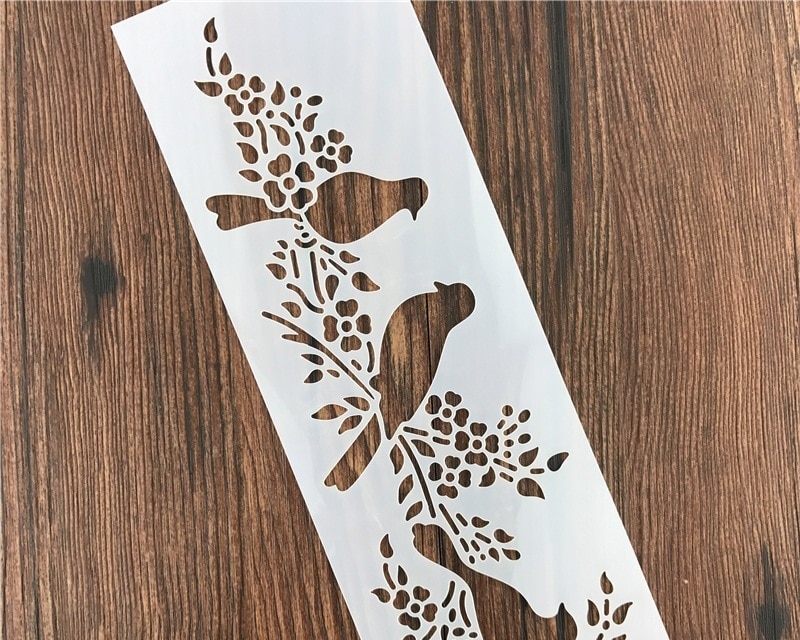

The field of drawings and the arts has experienced enormous advances over the years thanks to techniques and tools that are as revolutionary as they are useful. Among these tools are airbrushes. Based on a technique called airbrushing, these tools are available in several types and require strict conditions of use for optimal results. Depending on what you want to do with it, you will have to make your choice of airbrush among many others. You also need to know all the airbrush basics to handle the tool.
Siphon airbrushes are ideal for people who are going to get their first airbrush. On the contrary, gravity airbrushes are more focused on people with some previous experience. If you are looking for total control, opt for double-action airbrushes. Single-action airbrushes are usually cheaper, but keep in mind that their functions are more limited.
To help you understand more how to use this device, in this complete guide, we will provide all the airbrush basics a beginner in the technique needs.
The airbrush is based on two essential components: air and medium. The air vaporizes the medium. By medium, we mean the product used to produce the work. It can be oil, ink, or even a painting.
The product is therefore vaporized with compressed air. The spray that characterizes the airbrush is done by a precise mechanism. To use your airbrush properly, you should know how to handle the trigger but also use products suitable for its operation.
One thing you should note with airbrushing is the gun, nozzles, and needles are usually prone to blockages. Therefore, timely maintenance has to be ensured.
According to most reviews, the most complete airbrush spray gun wash model must be the 4 Set Airbrush Spray Gun Wash from Ebest. This type of cleaning tool is a must-have for airbrushers as it can restore nozzles to perfect conditions.
In the market, we find several types of airbrushes that vary according to the action of the trigger, the mechanism used to mix paint and air, among other features.
When talk about the airbrush feeding system, we are referring to how the ink enters the painting instrument. This is another essential feature that relates to the operation of the airbrush. It can be in two ways: by siphon or by gravity. First, the so-called “gravity” models are those which have a paint container on their top. The paint flows by gravity into the body of the gun. The advantage of this type of airbrush is that disassembly and cleaning are easier and there is no loss of paint. It still has a less practical side, because the mixtures must be done directly in the bucket.
Then, the so-called “siphon” versions are characterized by a removable bucket placed below. The paint is sucked in by the projected air going up through a pipette. This model allows the preparation of several paints in advance for a quick switch between two colors. However, its main drawback is the waste of paint.

Airbrushes also differ in the action of the trigger, which can be single or double.
In this way, the ink flow can be continuously adjusted. Depending on how you handle the shutter, it can produce finer strokes or a larger volume of ink.
Here it requires a lot of skill and talent from the artist. It is best suited for painting professionals who use shading techniques in their activities. Because it is a more complex instrument, its price is higher and the cleaning more laborious.
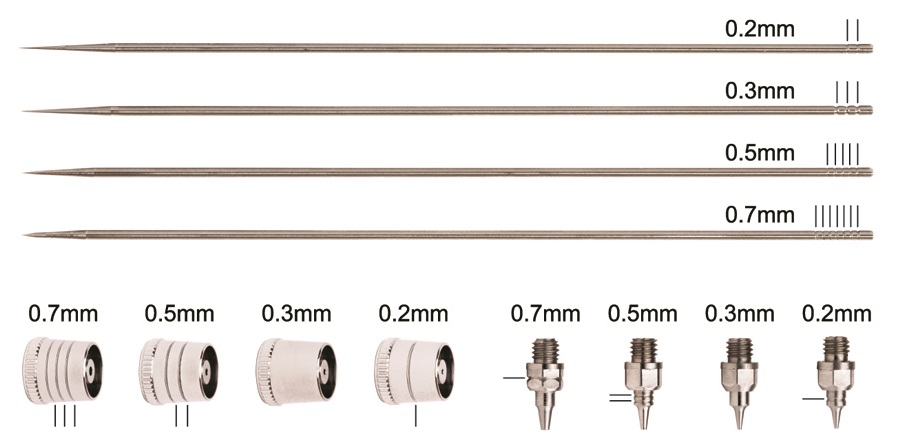
We are talking here about the elements which are placed at the head of the airbrush gun, through which the air-paint mixture is projected. The choice of nozzle and needle size will depend on the use of the tool.
A narrow set, i.e., 0.2mm or 0.3mm in diameter, will provide a fine spray and allow details to be worked better. This is suitable for works requiring precision, such as for making fine lines. Clearance greater than 0.5 mm will be more suitable for painting larger surfaces or backgrounds.
In any case, the ideal is to turn to an airbrush which is supplied with several nozzles and needles of different diameters to have a more extended use.
When it comes to using the airbrush, air can come from a variety of sources, such as diaphragm compressors, compressed air canisters, and oil bath compressors.
Diaphragm compressors have a permanent operating system. They do not have an air reserve. They have the disadvantage of making a lot of noise. Air bombs are the cheapest on the market. It should be noted that the reserves are running out quite quickly. However, according to some users when you are new to airbrushing, air bombs are more suitable.
Oil-filled compressors make less noise. They are called “silent”. The advantage is that they can be used at any time.
When using it for the first time, it is important to add a special oil designed for this purpose. As you go along, remember to drain it.
Just as a car must not run out of fuel, the airbrush also depends on other elements to function. An airbrushing kit must include a compressor. The compressor generates compressed air to spray paint on the painting instrument.
Air compressor, ink, and solvent, and air mask, glasses, and gloves are some essential elements for the use of the airbrush.
In principle, most paint can be applied to the airbrush. But it needs to be well thinned so as not to clog the instrument. Acrylic paint is generally used for airbrushes. It is of much better quality when it is still new. Over time, the rendering may not be satisfactory. After acquiring the paint, you must then thin it. This operation determines the quality of the work. There are commercially available thinners suitable for a specific brand of the paint bucket. The recommended is 91° or 70° alcohol Trusted Source Can Rubbing Alcohol Be Used To Clean An Airbrush? – Airbrush Insider airbrushinsider.com . Otherwise, it is also possible to use demineralized water or windshield washer fluid added to water.
The ideal consistency is similar to that of whole milk. When you spray, the ink, although a little runny, remains fixed on the surface. If you have money to invest, it is worth turning to inks that are already diluted for use in airbrushes.
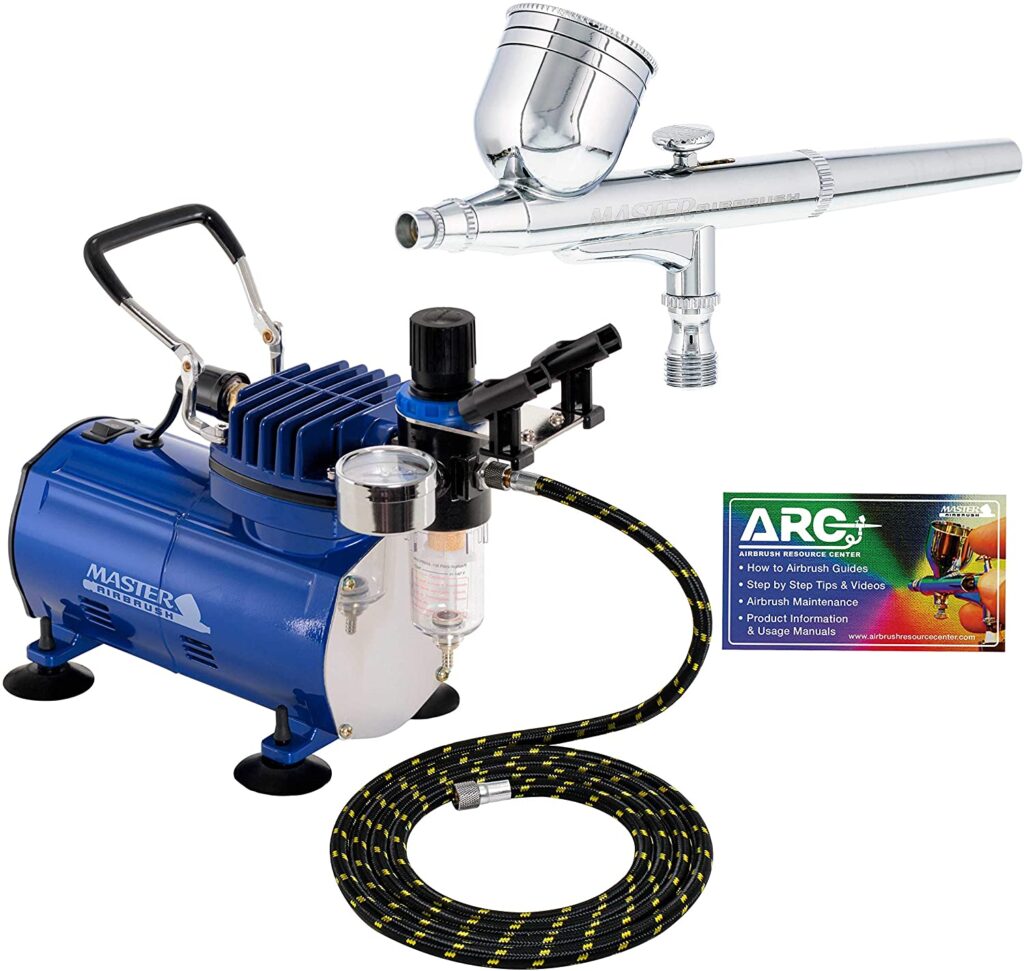
To work, the airbrush needs an air source, more precisely an air compressor Trusted Source Compressor - Wikipedia en.wikipedia.org . Usually, you need to buy it separately. The good news is that airbrush manufacturers often indicate the ideal compressor model. But in general, the best models, are those that come with pressure gauges or regulators.
An airbrush cannot work if it is not connected to a compressor. It is the compressor that produces the compressed air necessary for spraying the paint. There are models without storage tanks and versions with storage tanks. More suitable for beginners, the ones with no storage tank are sufficient to perform various jobs knowing that they accept different sizes of nozzle.
Most airbrushes don’t come with compressors and other kits. However, you can find models with a complete kit. Ideal for beginners and other levels of beginners, the Master Airbrush Cool Runner II is one of the most purchased by artists. It has a dual-fan, an air compressor, three airbrushes, siphon, and gravity feeds, and more.
The artist must also be cautious about his health. After all, we are talking about a job that involves mixing chemicals.
No matter how careful you are to apply it sooner or later, the instrument spills paint. To avoid direct contact with sensitive areas such as hands and eyes, protective gloves and goggles should be worn.
Wearing gas masks also makes perfect sense. As the substances spread through the air, the equipment filters the vapors and reduces the risk of respiratory problems.
When it comes to the spray technique, you shouldn’t linger at one point for long. Otherwise, there will be spots that look unnatural. The only exceptions are the targeted use of points, for example, to generate lights or a star nebula.
Since some colors often mix, you should always spray your colors on white paint. This is strongly recommended, for example, if you want to start with the water-soluble airbrush paints on a hood. Then it should have a white lacquered base at this point.
It’s best to start with small shapes and designs. Because you first need a feel for the technology. Therefore, after a few units of the spray guide, start with a simple motif.
To spray, it is important that you see the feel and result of how the gun behaves when you hold it close to the painting surface and further away. This also includes how you move the controller more or less to create fine transitions. To formulate it more vividly, it is best to create the following effects using the respective technique:
You should run the airbrush very close to the painting surface so that you can create thin lines. The color regulator can only be operated lightly.
To do this, choose a medium distance to the painting surface, which must then vary according to the intensity of the paint application. This means that darker areas of a shadow, for example, need a closer distance. The controller needs a middle actuation.
Here the distance to the painting ground is very high. This ensures that you are creating even surfaces. You push the controller backward as much as possible.
The airbrush is essential for both experienced painters and beginners. It’s a versatile tool that is useful in many industries, whether in artistic painting, model making, beauty, or even cooking.
From body painting to the automotive industry, airbrushes are devices that are increasingly in demand for their magnificent versatility. In addition, they allow you to achieve details that are very difficult to achieve with other tools, such as brushes. However, it is a complex instrument with many variables that affect its performance so it’s important to know the airbrush basics before buying and using the tool.
